Wednesday, March 6, 2024 -Think of springtime in Paris on a grand boulevard


WEDNESDAY
MARCH 6, 2024
What is the story behind the public benches of Paris?
ISSUE # 1197
Spring will soon be here and my curiosity led me to check out the origin of the Parisian street furniture. So classic and wonderful and the style continuity that we lack here. Saluting Paris!!!!!
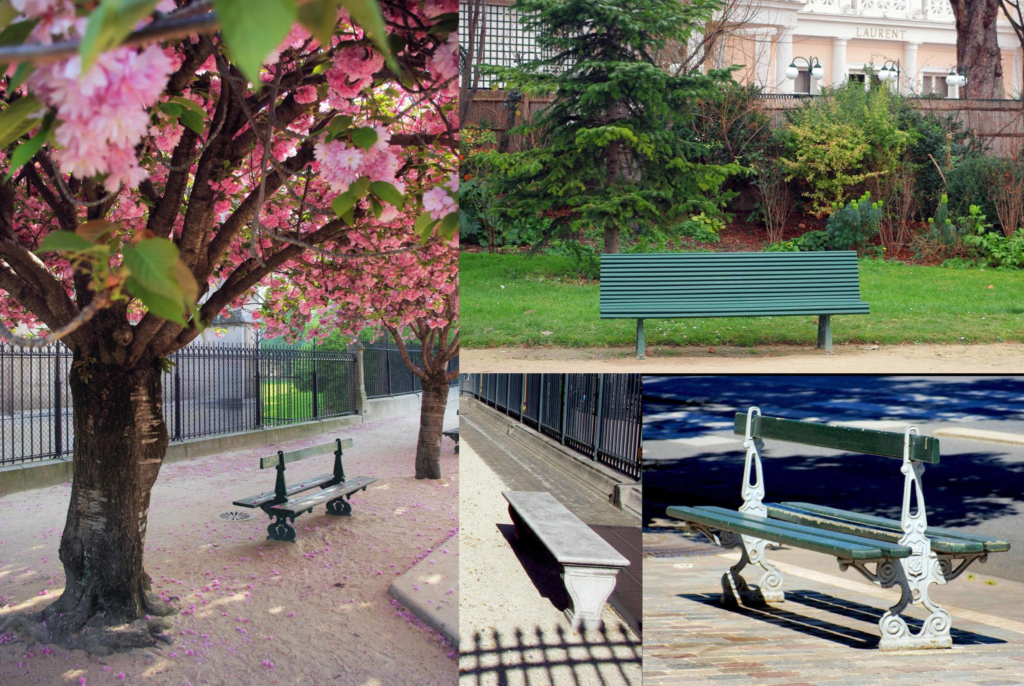
When you visit Paris you’ll hardly notice them. But they are found in the hundreds throughout the French capital. The iconic public benches of Paris are part of the street furniture designed by French architect Gabriel Davioud. They played their part in Haussmann’s vast public works program in the mid-19th century.
To illustrate this article I had to search really hard through my photo library. As I mentioned earlier, we take the benches of Paris so much for granted that they might not seem the most interesting thing to photograph. However, after reading this blog post, I’m pretty sure you will never look at them in the same way!
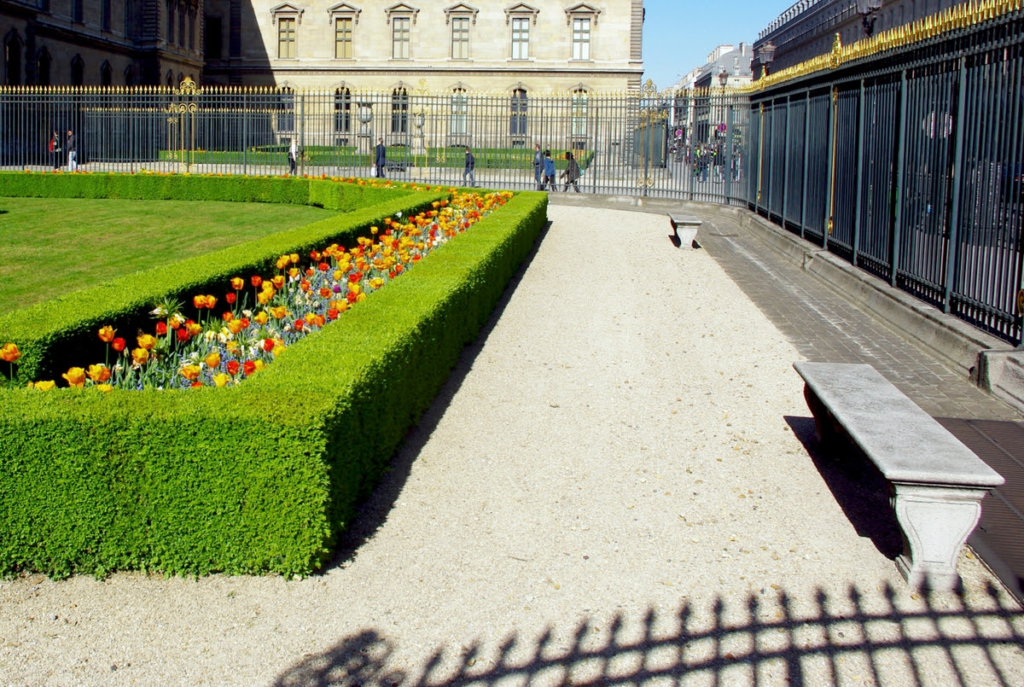
The first public benches of Paris
| The first benches made from stone or wood, as well as seats for rent, are recorded from the 18th century. |
| But it’s only from the Second Empire (mid-19th C.) that Paris’ pavements were furnished with thousands of public benches.When Baron Haussmann undertook the great urban work across the city of Paris, a series of structures were set up along the newly opened boulevards. All street furniture was harmonised in the same style and dark green colours. This was true for Morris columns, pissoirs, newspaper kiosks, lampposts, and by the 1870s the Wallace fountains. |

Morris Column, Square de la Tour Saint-Jacques , 4th arrt of Paris © French Moments
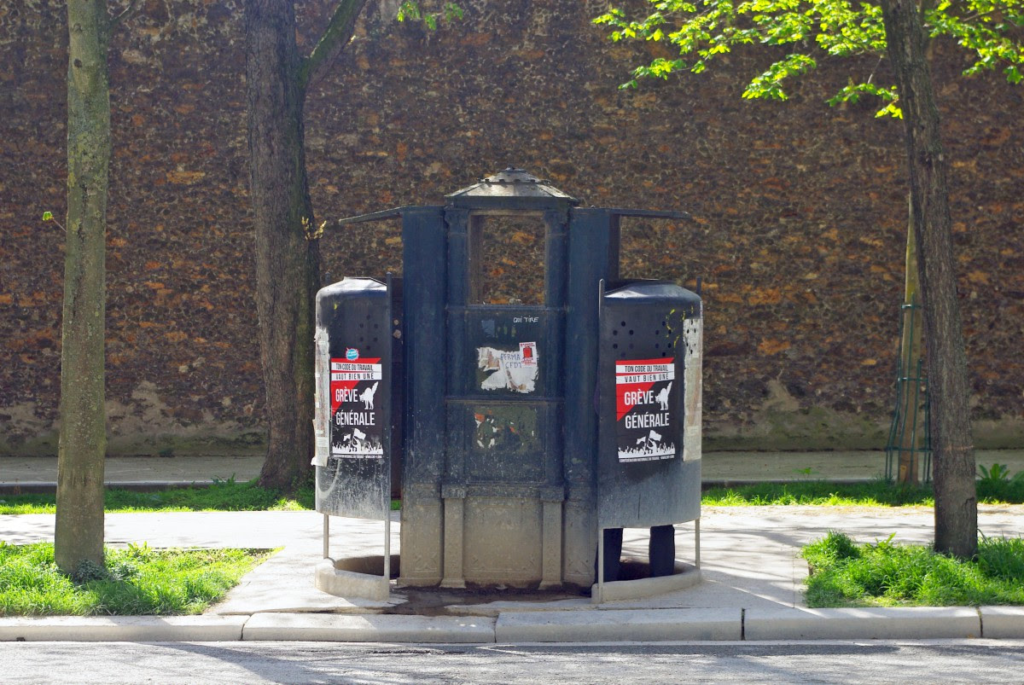
The last vespasienne in Paris, boulevard Arago © French Moments (pissoir)
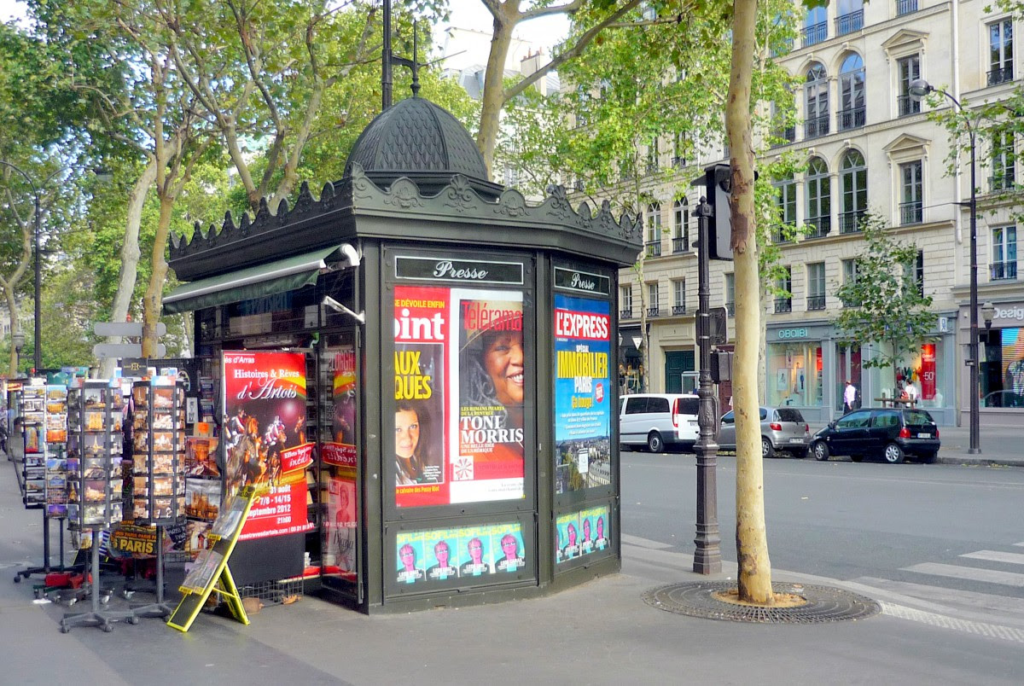
A newspaper kiosk in Boulevard des Italiens (9th arrt) © French Moments
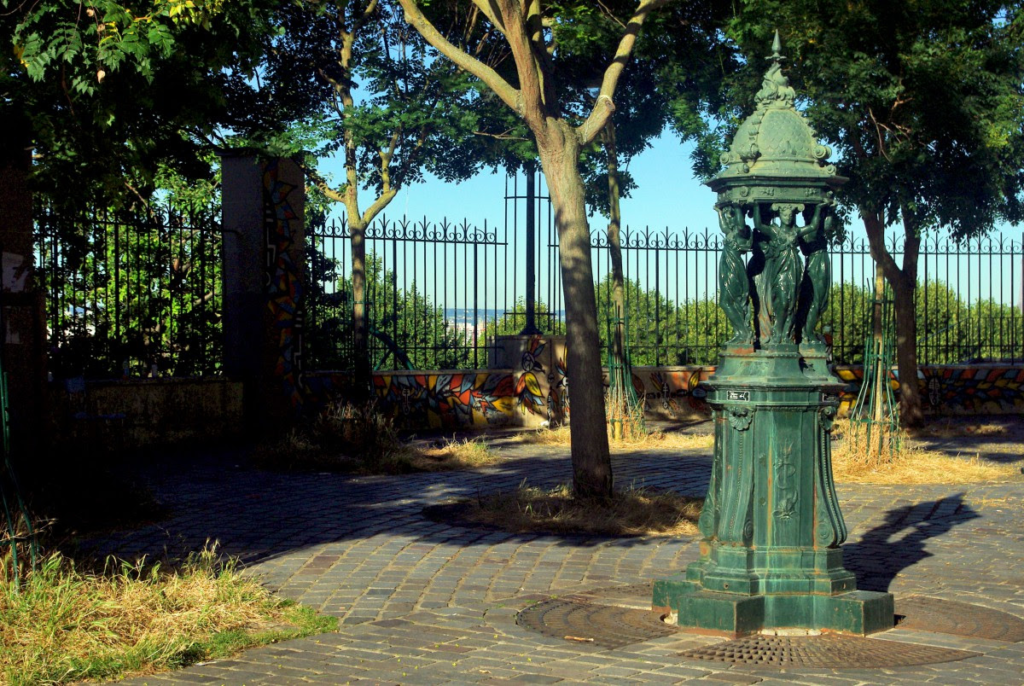
Wallace Fountain in Rue Piat (20th arrt) © French Moments
The benches of Paris were no exception to that rule. They were also codified and painted in dark green.
The public benches were designed by French architect Gabriel Davioud in the 1850s. He was the main collaborator of Baron Haussmann and his works included the magnificent entrance gate of Parc Monceau, the Saint-Michel fountain and the Châtelet theatre.

Romantic places in Paris: the first touches of Spring in Parc Monceau © French Moments
For the comfort of walking Parisians
Baron Haussmann introduced the public benches for the comfort of the walking Parisians.
At that time there were no cars and public transport was not as efficient as it is today.
Therefore people walked much more than today… and as you can guess, the benches were greatly appreciated for providing a comfortable place where people could catch their breath!
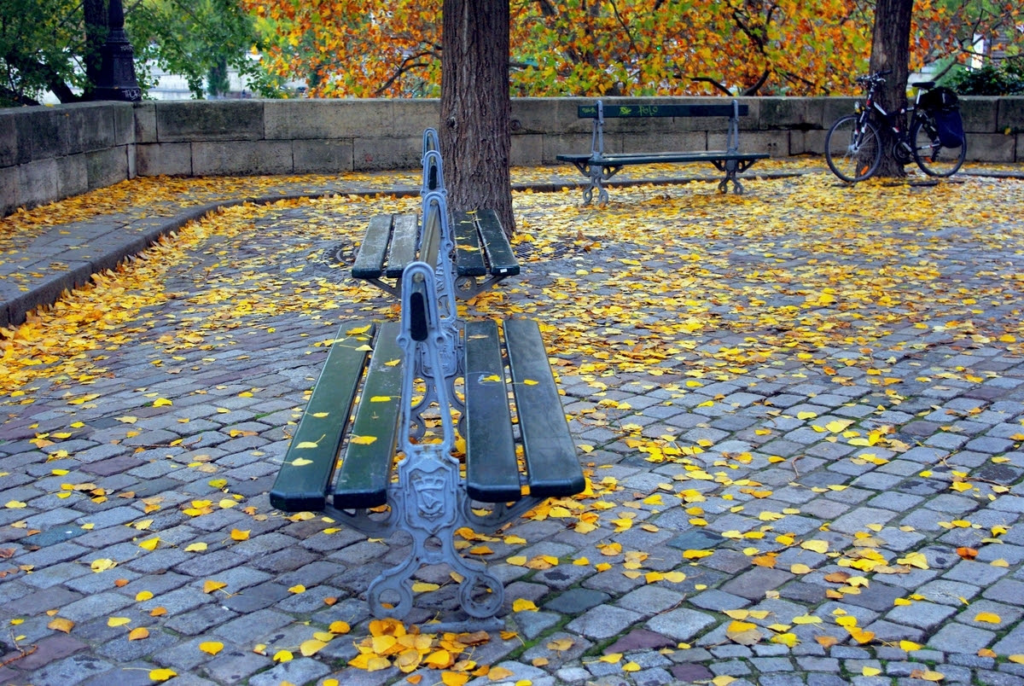
The first public benches appeared on the Grands Boulevards and in the public gardens (les squares parisiens) opened by Haussmann.
It is now obvious that many bench locations have since become obsolete. On many occasions, I spotted a bench and wanted to take a little rest. But it was often located too close to a car and the gutter, or next to a dirty and ugly litter bin… a puddle around it (hoping it’s not something else!), litter on the wooden boards. Why would I want to sit there? How times do change!
Over time, the models of public benches have been modernised and diversified. Some models have been created with the intention to stop homeless people from sleeping on them.
But let’s face it, this strategy hasn’t been well-received by many Parisians. Some find it cruel. As a matter of fact, the homeless are not the only people who might like to lay down on the Paris benches…
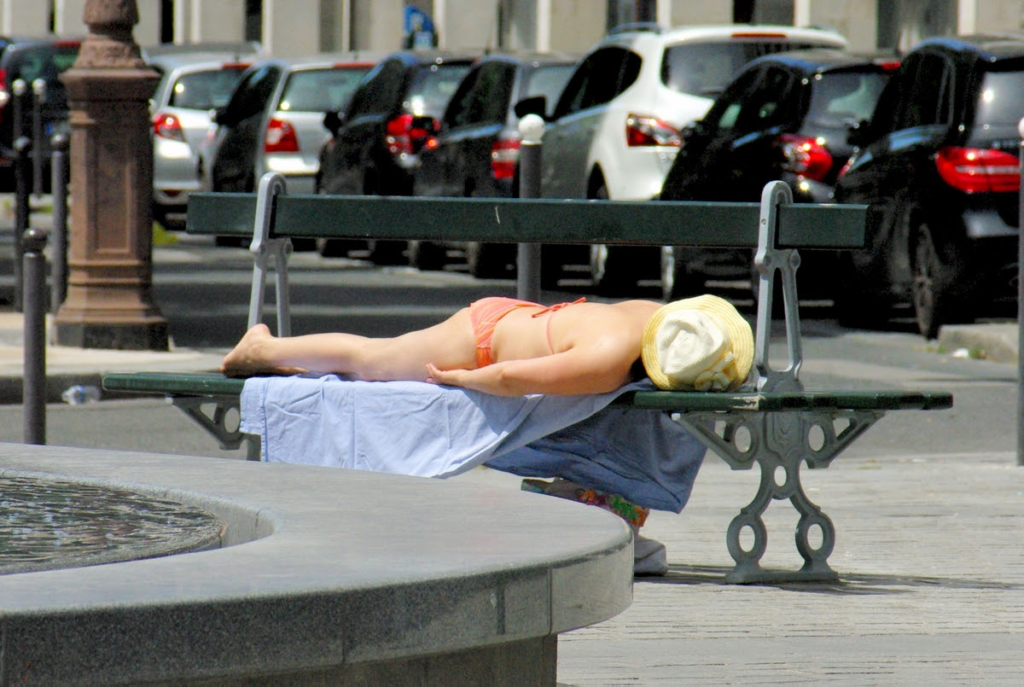
The benches of Paris are used for various activities! © French Moments
Madame, has anyone ever taught you the rules of propriety? Tsk-tsk…
The two models of Paris’ benches
It is estimated on Wikipedia that there are around 100,000 public benches designed by Davioud throughout Paris. (although I have to say I’m a bit doubtful about this high figure – other sources show 10,000).
Davioud had two models designed: the straight bench and the ‘gondole’ bench.
The straight bench (le banc droit)
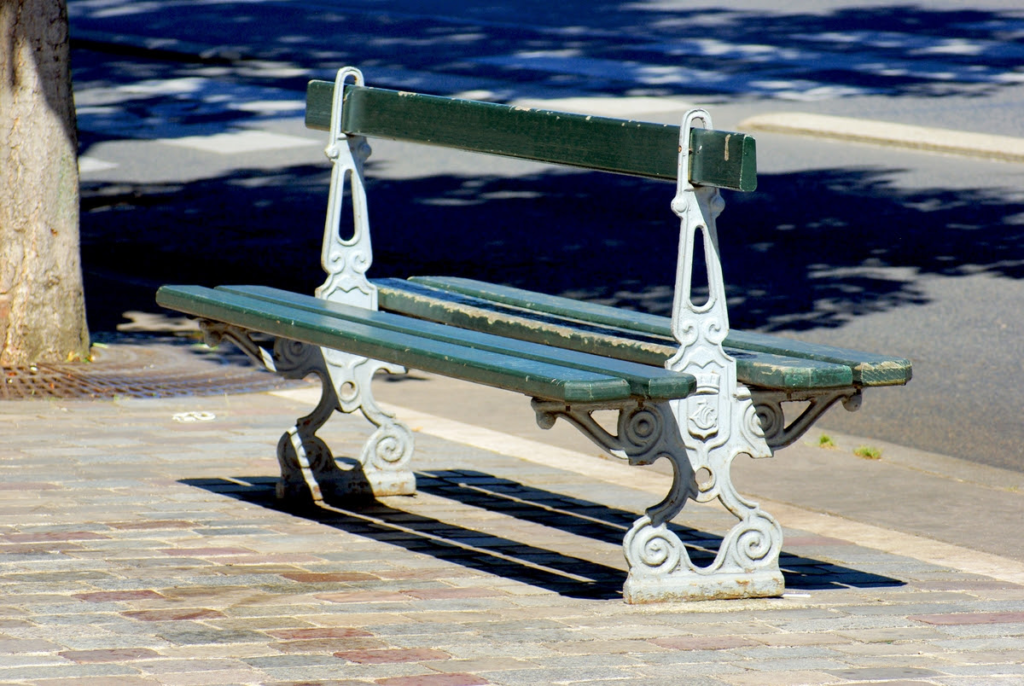
The first model of the bench is made up of straight and perpendicular boards hold by a cast-iron structure that display the coat of arms of the City of Paris.
The bench consists of one or two sides.
It is found on the pavement of avenues and boulevards, aligned with the street trees.
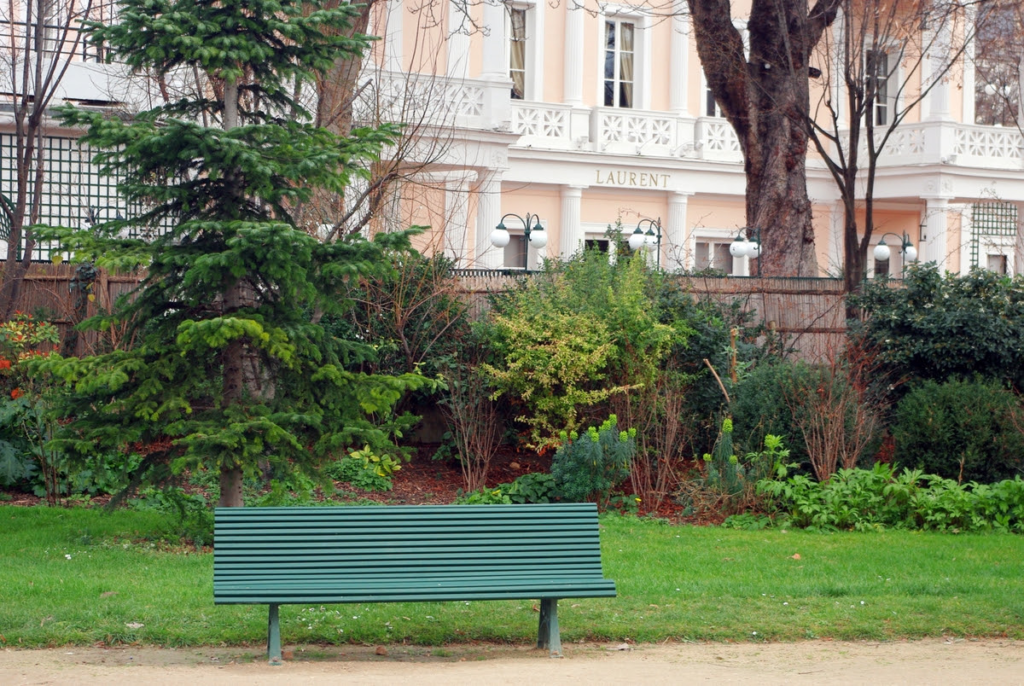
The gondole bench (le banc gondole)
The Gondole bench in the Champs-Elysées gardens © French Moments
It consists of strips of wood painted in dark green and supported by cast-iron legs.
The deep-seated bench is mainly found in the public gardens of Paris.
WEDNESDAY PHOTO OF THE DAY
SEND YOUR RESPONSE TO:
ROOSEVELTISLANDHISTORY@GMAIL.COM

Text by Judith Berdy
French Moments
(c) ALL MATERIAL COPYRIGHT FRENCH MOMENTS
MAYA LEVANON-PHOTOS TIK TOK & INSTAGRAM
All image are copyrighted (c) Roosevelt Island Historical Society unless otherwise indicated
www.tiktok.com/@rooseveltislandhsociety
Instagram roosevelt_island_history
THIS PUBLICATION FUNDED BY DISCRETIONARY FUNDS FROM CITY COUNCIL MEMBER JULIE MENIN & ROOSEVELT ISLAND OPERATING CORPORATION PUBLIC PURPOSE FUNDS.


Copyright © 2024 Roosevelt Island Historical Society, All rights reserved.Our mailing address is:
rooseveltislandhistory@gmail.com

Leave a comment